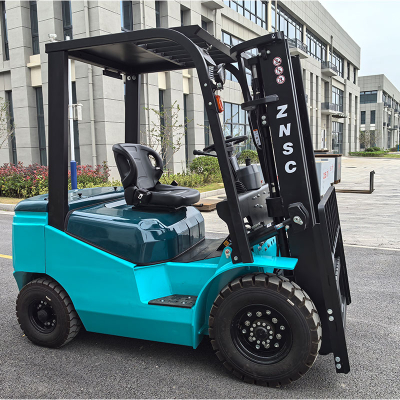Rough Terrain Forklifts vs. Standard Forklifts: Five Key Differences And The Ultimate Guide To Selection
In the material handling world, choosing the right equipment is crucial to project safety, efficiency, and cost. A fundamental question many clients often ask during inquiries is: What is the difference between a rough terrain forklift and a conventional forklift? Making the wrong choice can not only damage the equipment but also lead to project delays and additional rental or purchase costs.
1. The design intent of both types determines everything.
Standard Forklifts
These typically refer to indoor or Standard Forklifts, designed for use on flat, solid indoor surfaces, such as concrete or asphalt floors in warehouses, factory floors, and logistics centers. Their design focuses on maneuverability, lifting height, and precise stacking of cargo.
Rough Terrain Forklifts
As the name suggests, these are construction vehicles designed for outdoor use on rugged, uneven, and unpaved surfaces. They are commonly found in environments such as construction sites, farms, lumberyards, and mines. Their design focuses on stability, traction, and maneuverability to handle mud, sand, slopes, and potholes.
2.Comparison of key differences between off-road forklifts and Standard Forklifts
Features | Standard Forklifts | Rough Terrain Forklift |
Tire Type | Solid or non-marking polyurethane tires, narrower, prioritize ground protection and low noise. | Large pneumatic tires with deep treads provide excellent grip and cushioning, suitable for rough terrain. |
Powertrain | Mainly powered by electric or propane/LPG, these are quiet, emission-free, and suitable for indoor operation. | Almost all use high-horsepower diesel engines, providing substantial torque and suitable for outdoor heavy loads and hill climbing |
Operating Environment | Flat, hard indoor surfaces (warehouses, distribution centers). | Uneven outdoor terrain (construction sites, farms, rough terrain). |
Chassis and Suspension | A simple, rigid chassis, often without a suspension system, results in a slow ride on bumpy roads. | A reinforced, heavy-duty chassis, many models equipped with a suspension system for enhanced stability and operator comfort. |
Features and Accessories | Dedicated to handling. A wide range of attachments are available. | Often equipped with four-wheel drive and mechanical steering, these trucks offer enhanced capabilities, making them suitable for loading and material handling. |
3. How do I choose? Scenario-based decision-making guide
Choose a standard forklift if you answer "yes":
Is my operation primarily indoors?
Is my surface flat, solid concrete or asphalt?
Do I have strict noise and exhaust emission requirements (e.g., in the food or pharmaceutical industries)?
Is my primary work involving high-density stacking and precise load positioning?
Choose a rough terrain forklift if you answer "yes":
Is my worksite located outdoors on a construction site, farm, or unpaved land?
Do I frequently navigate muddy, sandy terrain, steep slopes, or uneven surfaces?
Do I need strong power and traction to move heavy construction materials (e.g., lumber, pipes, bricks)?
Are the weather and terrain constantly changing?
Conclusion
In summary, the choice between a standard forklift and a rough terrain forklift isn't about superiority or inferiority, but rather suitability.
Standard forklifts are the kings of indoor logistics, striving for efficiency, precision, and environmental friendliness.
Rough terrain forklifts are the kings of outdoor construction, designed to conquer rough terrain and heavy loads.
The wrong choice can lead to increased equipment wear, the risk of safety incidents, and reduced productivity. Carefully evaluating your primary work environment and requirements before investing is key to ensuring a successful return on investment and a smooth project.








